This Tutorial will cover the full concept of the physical structure of networks.
The classification of the physical structure of networks into two categories might include the
- type of connection and
- network topology,
two topics that stand out in the context of all types of exams.
Table of Contents
ToggleTypes of Connection
Two devices can communicate with one another when they are both continuously connected to the same link in some way.
There are 2 different types of connections: point-to-point and multipoint.
Point-to-Point Connection
- The term “point-to-point connection” indicates a direct connection between two devices, i.e., a sender and a receiver.
- An example of this is that a television and a remote control both have a point-to-point connection, i.e.

Multipoint Connection or multidrop connection
- Multipoint connections, as their name suggests, are links between a sender and numerous receivers that enable multiple devices to share a single link.
- If there are five persons living in the same home, we could use wifi to provide them with internet access.
It allows for the provision of the internet to several devices—for which a modem is often used—from a single device.
The Figure shown below will help you better understand:

Network Topologies
The topology of a network is a geometric representation of the relationship among the interconnected devices.
Bus Topology
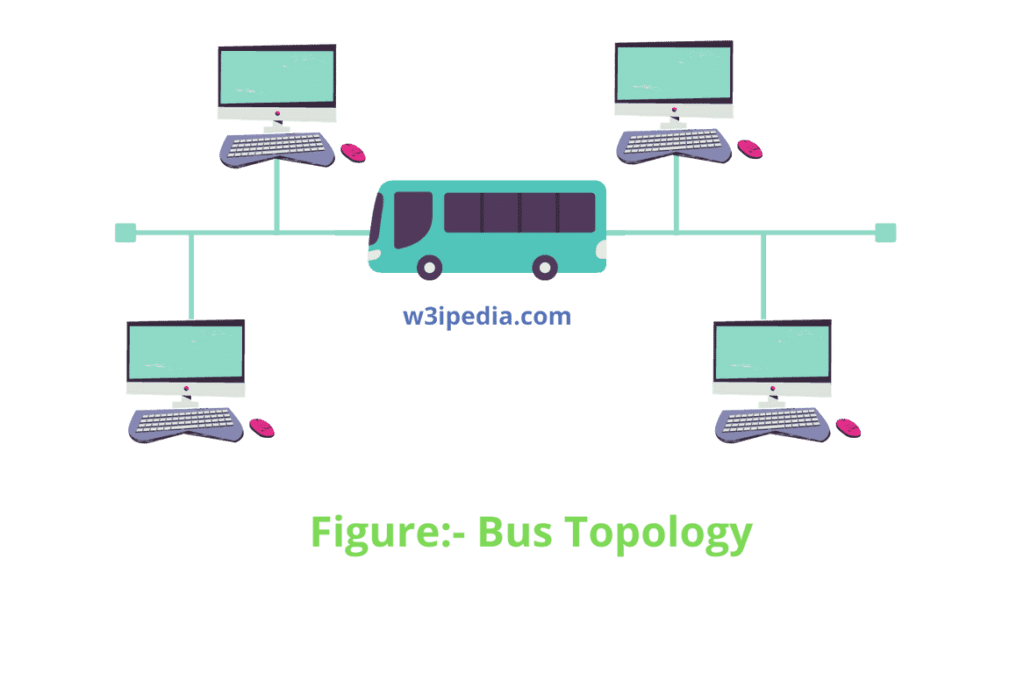
As shown in the figure, a bus topology connects every component of the network using a single common cable with exactly two endpoints.
The failure of one device has no impact on other devices connected via the cable in this straightforward networking configuration.
The cable is referred to as the foundation or backbone of the topology. An easy technique to link devices is through bus topology.
A common transmission medium with exactly two endpoints connects all of the network’s devices.
All other devices, though, could stop working if there is an issue with the shared communication cable.
Advantages of Bus Topology
- Spinal cord
- Very low price
- Easy to understand
- Easy to install
Disadvantages of Bus Topology
- A fault or fault in the bus cable stops all transmissions.
Star Topology
A star Topology connects all devices using point-to-point connections via cables to a central point as shown in Figure.
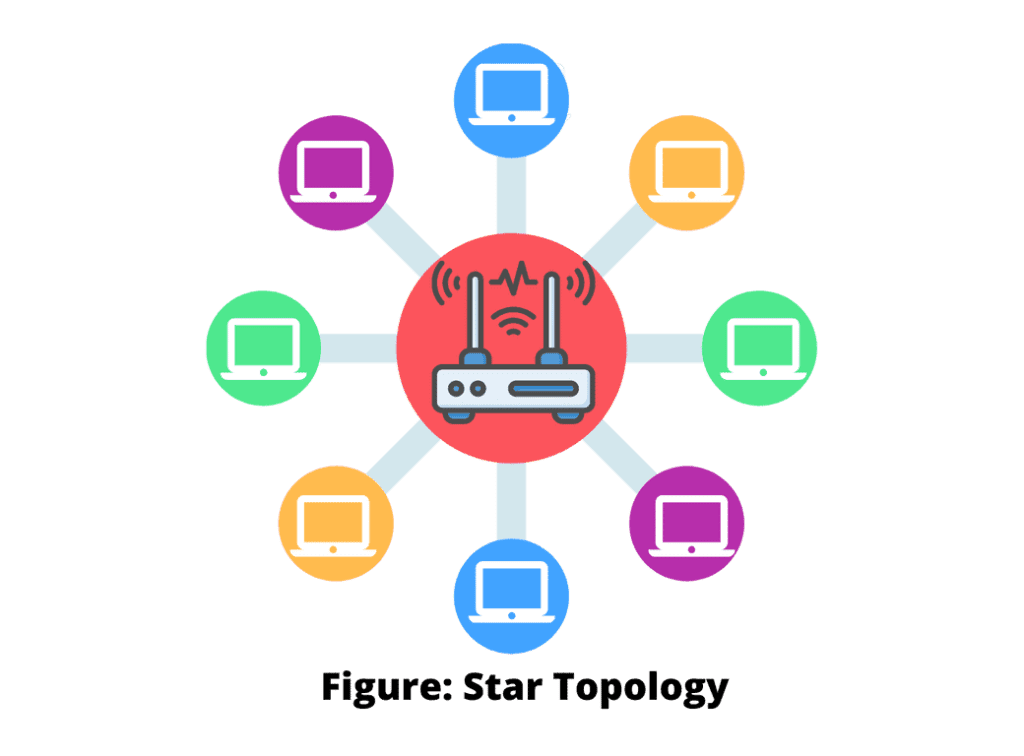
The central point is known as a hub or switch. The central device controls all the traffic. Accordingly, only the central point can be used by devices to send data between them.
Advantages of Star Topology
- It is easy to install
- easy to reconfigure
- Less expensive
- the best thing is if some problems occur in a cable then only the respective computer gets disconnected from the network.
Disadvantages of Star Topology
- Consumes more cables than the bus topology
- The bad thing is if a problem occurs in the hub or switch, then the whole network becomes dead.
Ring Topology
- Ring Topology= a computer connect with exactly two other computers forming a ring of computers.
- A computer can send data to its immediate neighbor.
- A ring can be unidirectional or bidirectional. In a unidirectional ring topology, data is sent either clockwise or anticlockwise.
- In a bidirectional ring topology, data can travel in any direction. Upon receiving data, a computer may pass data to its next neighbor. In this way, data reaches the desired destination. A failure of connection between two computers may down the whole network. Unlike star topology, it does not require a central device to manage the connectivity between the devices.

Mesh Topology
- Mesh topology connects all devices with each other through a direct link.
- As compared to a ring topology, data may reach its destination quickly.
- The mesh topology is an expensive topology in terms of cable cost as it uses a lengthy cable to connect computers as compared to the cable used in other topologies. However, the mesh topology is more reliable as it offers a point-to-point connection. It is also considered more secure as data travels only between a sender and a receiver.
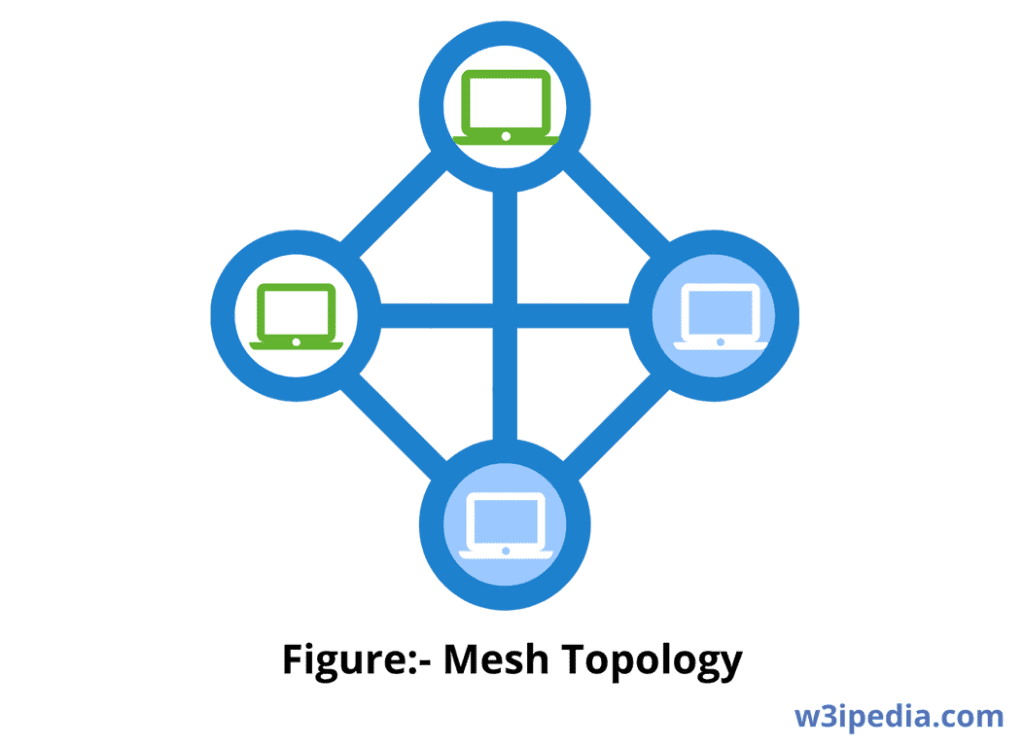
No. of links & No. of I/O ports
Number of links=n(n-1)/2
Number of I/O ports= n-1
Example:- we have 5 nodes
No. of links= 5(5-1)/2=10
No. of I/O ports=5-1=4
Tree Topology
- Nodes are arranged in a tree-like form in a tree topology.
- This type of network topology, also referred to as hierarchical topology, is the most popular one currently in use.
- In a tree topology, the design begins at the root, the point where branching cables first emerge from the top of the head.
- In the absence of loops, a subdivision or branching wire connects the root to every other node. As a result of its thick wiring, tree topology is more expensive.
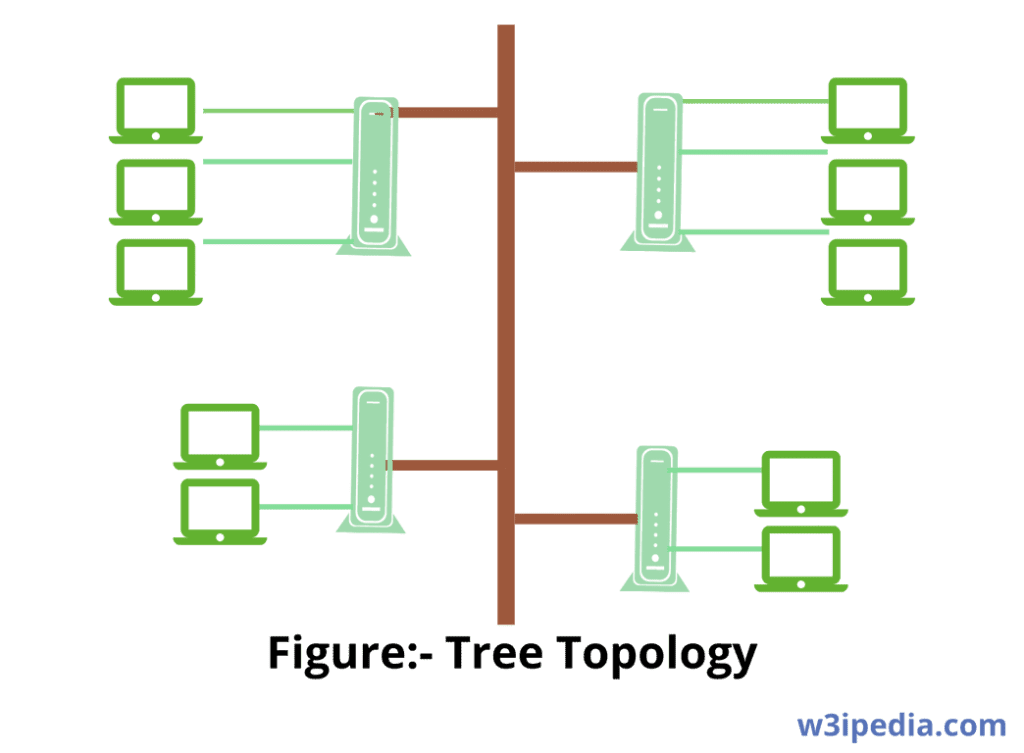
Advantages of Tree Topology
- Easy error detection.
- Supports broadband transmission: It supports broadband transmission which is why this topology is often used in corporate networks.
- Cost-effective: A tree topology makes it simple to add additional devices to the network.
- Easy maintenance: Devices are grouped into small star networks and these star networks are interconnected using bus topology. Device management is easy in a small star network.
- Reliability: A single system failure does not bring down the entire network. A failing system can be easily managed.
Disadvantages of Tree Topology
- Cost: The cost of broadband transmission is high.
- Dependent on backbone cable of bus topology: All devices connected in star networks are connected to other devices using the backbone cable of bus topology. A failure in this main cable can affect the entire network.
Hybrid Topology
Hybrid topology= combining two or more topologies,
In Equation Form
Hybrid topology= star & ring topology
A network topology called a hybrid topology is created by combining two different network topologies.
Hybrid Topology simply indicates that two topologies are combined.
Advantages of Hybrid Topology
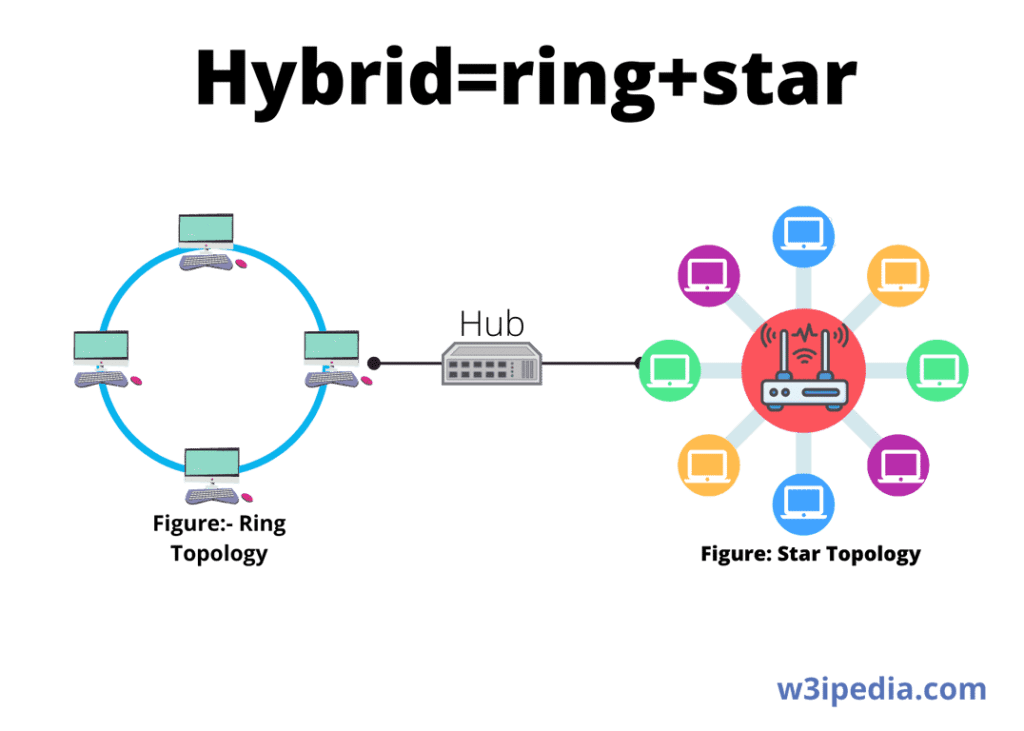
- We can choose topology based on requirements eg, scalability is our concern then we can use star topology instead of bus technology.
- Scalable because we can connect other computer networks with existing networks with different topologies.
Disadvantages of hybrid topology
- Error detection is difficult.
- Installation is difficult.
- Design is complex so maintenance is more expensive.